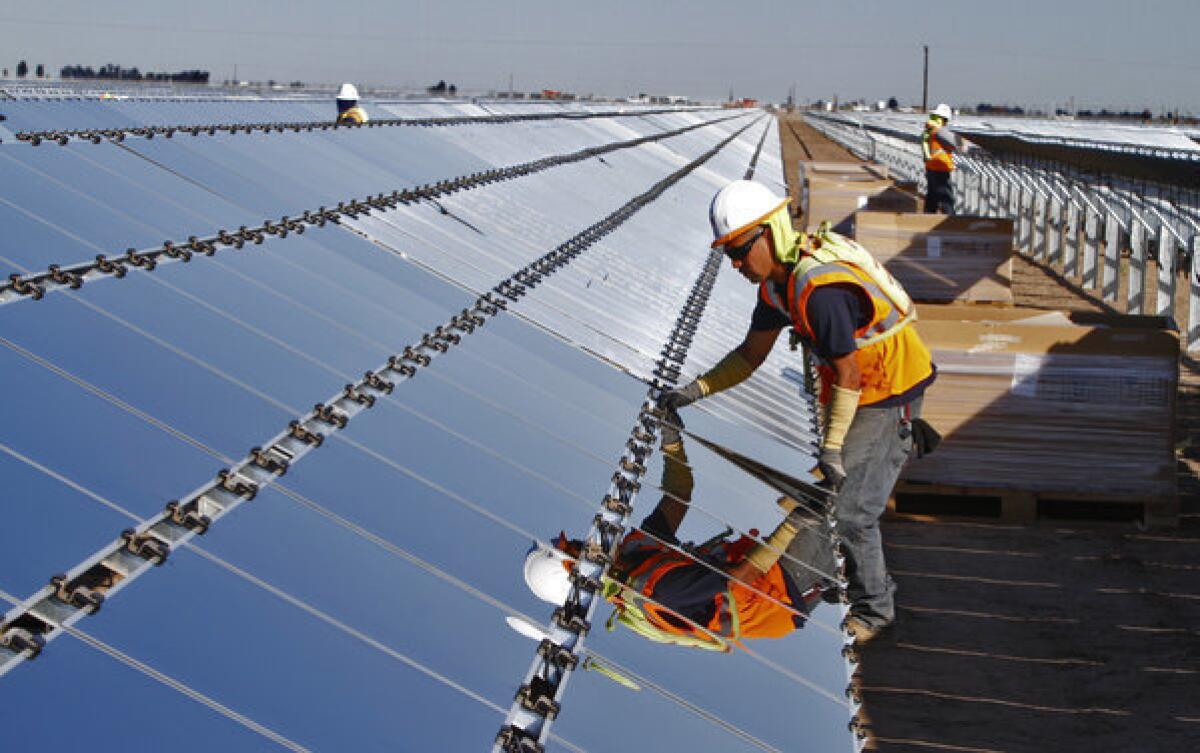U.S. held $1.63-billion trade surplus with China in clean energy

- Share via
In the clean energy market, the U.S. trumped China. At least in 2011.
U.S. firms held a $1.63-billion surplus in the clean energy trade over China, according to a report by the Pew Charitable Trusts.
That surplus was for 2011, the latest year data is available. It was a rare bright spot in a relationship that had the overall U.S. trade deficit with China hitting $315 billion last year.
Phyllis Cuttino, director of Pew’s clean energy program, said the findings highlight the long-term potential for the U.S. to hold its top spot in the clean energy sector.
“U.S. companies are tapping into the growing worldwide demand for clean energy goods and services,” she said. And they are finding “the payoff for our leadership in wind, solar and energy smart technology innovation.”
All told, the two countries traded more than $8.5 billion worth of clean energy goods. Innovation, entrepreneurship and its global presence all contributed to U.S. businesses pulling ahead of their Chinese counterparts.
U.S. firms enjoyed surpluses in all three major clean energy sectors: solar, wind and energy smart technologies, or products that use energy efficiently.
In solar and wind, China used its manufacturing and labor edge to produce large numbers of cells and turbines. But the U.S. focused successfully on high-margin material, high-tech equipment and other high-value products that ultimately raked in greater profits.
Cuttino cautioned that to stay ahead, U.S. policymakers must continue investing in the success of its clean energy companies -- in promoting research, in growing domestic demand and also boosting global sales.
ALSO:
Reaction mixed to Obama’s bid to hike minimum wage
Imperial County is betting its future on renewable energy
Hawaii once again happiest state, West Virginia at bottom, poll says
Follow Shan Li on Twitter @ShanLi
More to Read
Inside the business of entertainment
The Wide Shot brings you news, analysis and insights on everything from streaming wars to production — and what it all means for the future.
You may occasionally receive promotional content from the Los Angeles Times.











